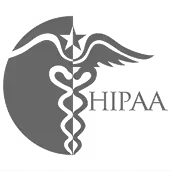PACE (Program of All-Inclusive Care for the Elderly) programs provide comprehensive healthcare services to elderly individuals who meet certain criteria, allowing them to receive care in their own homes or communities rather than in a nursing home or hospital. Using an electronic health record (EHR) system can provide several benefits for PACE programs, including:
- Improved patient care
- Enhanced coordination and communication
- Increased efficiency
- Reduced errors and risks
- Improved patient satisfaction
The use of electronic health records (EHRs) has revolutionized the way medical providers and healthcare organizations store, access, and share important patient information. PACE programs are no exception, as they can benefit greatly from the implementation of EHRs. In this blog post, we will discuss deeper how PACE programs can leverage the advantages of EHRs to improve their operations and provide better care to their participants.
Improved quality of care
PACE (Program of All-Inclusive Care for the Elderly) programs provide comprehensive, community-based care for seniors. These programs are tailored to meet the unique needs of each participant and strive to improve their quality of life. However, with traditional paper records, it can be difficult to track each patient’s care and ensure that they are receiving the highest standard of care.
This is where electronic health records (EHRs) come in. EHRs allow all providers within a PACE program to easily access a patient’s medical records and track their progress over time. This makes it easier for providers to spot potential problems or changes in health status early on and take appropriate action.
Furthermore, EHRs can help reduce medical errors as information is accurately entered, stored, and accessed in one central location. This eliminates miscommunication among providers and ensures that patients receive the most effective treatments.
Finally, EHRs enable providers to quickly access patient data and make care decisions. This allows for quicker interventions when needed, which in turn can lead to improved outcomes for patients.
In short, EHRs can play an important role in improving the quality of care provided by PACE programs. By providing easy access to accurate patient data and helping reduce medical errors, EHRs can help ensure that seniors receive the highest level of care possible.
Reduced costs
PACE programs that make use of electronic health records (EHRs) can benefit from reduced costs due to increased efficiency and accuracy in record-keeping. EHRs allow for the streamlined recording of patient data, eliminating the need for costly and time-consuming manual entry and storage of information. Additionally, EHRs reduce the amount of paperwork associated with medical care, which can lead to cost savings in the form of reduced administrative expenses.
EHRs also help to prevent medical errors which can be both costly and dangerous for patients. By providing accurate, up-to-date information to all members of a PACE team, errors due to misinterpreted or outdated medical records can be avoided. In addition, EHRs make it easier to identify potential medication interactions and other adverse events before they occur, reducing the risks of costly hospitalization or other treatments.
The cost savings associated with EHRs can be further enhanced through improved communication and collaboration between providers. By providing healthcare professionals with access to comprehensive patient records, unnecessary tests and treatments can be avoided. Moreover, EHRs make it easier to identify areas where interventions or services could be improved or altered to reduce costs while maintaining the quality of care.
By utilizing electronic health records, PACE programs can lower their operating expenses while improving the quality of care they provide to their patients. The cost savings associated with EHRs can help ensure that PACE programs remain viable and able to offer their services to those in need.
Enhanced coordination of care
PACE programs can benefit from the use of electronic health records (EHRs) when it comes to coordinating care. EHRs provide a central location for patient information, making it easier for providers to share information quickly and accurately. This is especially important for PACE programs, which often involve multiple providers working together to care for a single patient.
By using EHRs, providers can access the same patient record in real-time, enabling them to coordinate care more efficiently. This can be beneficial for patients in PACE programs who require a complex care plan and multiple providers. For instance, if a patient is prescribed medication from one provider, another provider can access the record and review any potential interactions or side effects that may need to be monitored.
In addition, EHRs can help with communication between providers. For example, if a provider needs to refer a patient to a specialist, they can easily create a secure message or referral within the system, which will ensure that all the necessary information is sent to the specialist quickly and securely.
Overall, EHRs can help PACE programs improve the coordination of care by providing a centralized platform for sharing information, reducing administrative work, and improving communication between providers. This can help ensure that patients receive the best quality of care possible and that their individualized care plans are being met.
Increased access to care
The implementation of electronic health records (EHRs) in PACE programs can help to improve the access to care for patients. By streamlining the patient registration and medical information intake process, PACE programs can reduce paperwork and enable quick access to patient data for staff. This means that more time can be spent on providing direct patient care instead of tracking down paper files or manually entering data.
EHRs also make it easier for patients to access their medical information, allowing them to keep track of their health and wellness goals. This can be done through secure patient portals which provide access to health records, lab results, appointment reminders, and other tools which can help patients stay informed and engaged in their care.
Lastly, EHRs can also be used to track and monitor wait times for appointments, allowing PACE programs to ensure that patients are being seen promptly. This helps to ensure that no patient is denied the care they need due to long wait times or lack of availability of providers. By leveraging EHRs, PACE programs can ensure that they are providing the best possible care while maintaining efficient access to services.
StoriiCare's Care Management features empower PACE Programs and Centers with real-time insights to help make informed decisions and improve participant care. See a live demo!


.avif)

.png)
.png)
.png)










